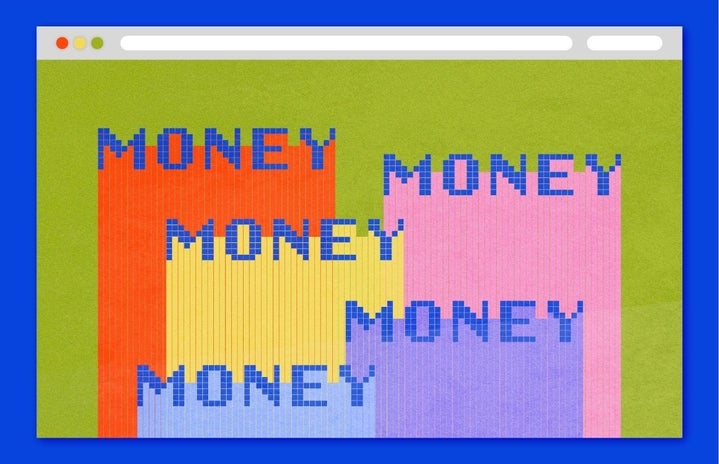When I graduated from high school, I wasn’t particularly financially savvy. I knew that it was a good idea to save money and keep it safe inside a proper savings account, but that was about the extent of my knowledge as a 17-year-old, working long hours over the summer at a minimum wage job.
I had had a regular savings account through Chase for a long time, and any money that I wanted to save from jobs or gifts was immediately deposited into the bank. I was perfectly fine with this until I had a rather enlightening conversation with a close friend of mine. We were talking about our concerns regarding our financial situations as we prepped for our first year of college, and she asked me if I had already opened up a “high-yield savings account.”
I remember shaking my head and asking — what in the hell is a high-yield savings account?
If you’re now wondering the same thing, allow me to help you out a bit.
What is a high-yield savings account?
A high-yield savings account is basically a government-insured savings account with annual percentage yields (APY) that pays back up to 20 to 25 higher than the national average of a traditional one, and are typically accessed through online banking institutions. In other words, when your money sits in a high-yield savings account, the amount of money that the bank gives back to you is considerably larger than the amount that a traditional savings account would be giving back to you.
In general, if you are looking to save any cash you might need in the future without becoming involved in stocks or facing the harsh withdrawal limitations of retirement funds, a high-yield savings account is a good way to go.
According to the Federal Deposit Insurance Corporation (FDIC), the national average savings rate is currently resting at 0.05 percent APY, which is really not much at all. These rates are typically found at your standard brick-and-mortar institutions. A lot of big banks only offer a 0.01 percent APY on their basic savings accounts, and while sometimes they might provide a way to increase this percentage, it often peaks around 0.10 percent APY — again, not much. At these low rates, your savings will not be able to compete with monetary inflation.

Why should I consider opening one?
Now, in some cases, people may simply like the ease of in-person access that comes with having a savings account at a more traditional banking institution. Transactions might at first seem easier if you have your checking and savings account at the same bank, directly linked to one another.
However, I wouldn’t shut the door on opening a high-yield savings account just yet.
While an online bank may not always have in-person accessibility, you’ll be able to access and keep track of your finances through mobile applications and/or ATMs. In this day and age, electronic transactions are ridiculously easy to set up and manage, even between accounts from different banks. And a high-yield savings account from an online bank can offer up to 2.00 percent APY, which is, again, a much more substantial amount than what traditional banks usually offer.
If this is starting to sound more appealing, let’s talk a little bit about a couple of the other factors that you should be taking into consideration. As it’s been established, not all high-yield savings accounts are built the same:
-
Think about whether or not the bank in question requires a minimum opening deposit, insufficient fund and/or monthly maintenance fees. Some banks might ask you to have a ready deposit of X amount of money right at the start and will charge you if your account dips below a certain level, while others won’t. If you are interested in opening an account with an institution that does have these charges (maybe their APY is higher), then be sure to calculate whether or not those potential fees cancel out the interest you are earning.
-
Consider how often you are going to be withdrawing cash from this account. Many banks will put a cap on the number of times you are allowed to make withdrawals per month, with the risk of incurring a fee.
-
Consider how often your interest is compounding. If it is advertised as daily, then the interest earnings on your account are calculated each day and give a slightly larger return, versus those advertised as monthly. However, the difference in interest is not a whole lot unless you have a ton of money in your account (and I mean a ton!).
Still, if a broke college student like me could find a suitable and helpful savings option in the form of a high-yield savings account plan, then so can you.

My experience with having a high-yield savings account
Seriously, I can attest to the usefulness and smooth experiences that I have had with my account over the course of the last couple years. I figured that my savings were just sitting in a regular account and accumulating little to no interest, while I hardly touched it. Thus, just before beginning my freshman year of college, I decided to open up a high-yield savings account with Discover.
I chose this institution because there was no minimum deposit requirement, no monthly fee or insufficient funds fee. However, the real kicker was that the 0.50 percent APY far surpassed those from traditional banks (they do like to brag about that), and was super competitive with other online banks. The only drawback of my account is that there is a maximum amount of withdrawals I can make. However, this does not impact me because I am not often withdrawing money out of this account or planning to, if at all.
Now, the decision to open this account was made even easier because I already had a credit card with Discover, and it became a simple matter of adding this savings account through an uncomplicated online registration process. I am able to access both my credit card account and my savings account through their mobile application. Transferring money to and from the latter account is a swift and straightforward process; I only had to link my Chase checking account one time, and now all transactions can be done within the span of a few minutes. It’s that simple.
So, having and maintaining a high-yield savings account can be a valuable part of your financial repertoire. Though of course, everyone’s financial needs are different and the best advice is always to consider your own personal situation, but we do all stand to gain from thorough budgeting and planning. This is just one considerable way to save smart!


